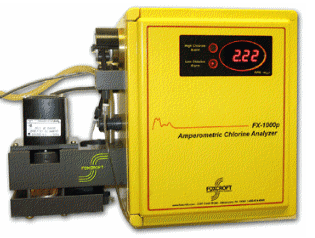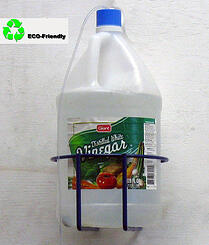 Foxcroft Equipment & Service Company's Amperometric Chlorine Analyzer's residual reading is determined by measuring the amperage produced by oxidized chlorine in the measuring cell. The amperage level is directly proportional to the level of free chlorine available in the sample stream. When reading total chlorine, the unit is actually reading converted free iodine from potassium iodine that is added to the cell for Total Chlorine readings.
Foxcroft Equipment & Service Company's Amperometric Chlorine Analyzer's residual reading is determined by measuring the amperage produced by oxidized chlorine in the measuring cell. The amperage level is directly proportional to the level of free chlorine available in the sample stream. When reading total chlorine, the unit is actually reading converted free iodine from potassium iodine that is added to the cell for Total Chlorine readings.
1 min read
The Foxcroft.com Blog: How our analyzer works (part 1)
By Michael Brooks on Wed, Aug 29, 2018 @ 10:32 AM
See part II to follow
2 min read
5 Reasons Why Vinegar is Good For Your Chlorine Analyzer And You
By Ray Sullivan on Mon, May 09, 2011 @ 10:21 AM
 So why does our model FX-CLv2 residual chlorine analyzer use ordinary distilled white vinegar and what does it mean for you?
So why does our model FX-CLv2 residual chlorine analyzer use ordinary distilled white vinegar and what does it mean for you?
1. It Optimizes Chlorine Residual Readings
A true on-line, amperometric, chlorine residual analyzer requires a pH buffer to bring the sample pH down to a range where optimum free chlorine residuals can be accurately measured, ideally 4.0 to 4.5 pH.
Any amperometric chlorine residual analyzer that claims buffers are not required uses either a pH buffered electrolyte in the probe, or makes an electronically simulated pH compensation (which is not a true chlorine residual reading).
The vinegar reduces the pH in the sampling cell, which provides the current potential needed to measure chlorine residuals accurately. Through dissociation, chlorine will be in the measurable form of hypochlorous acid rather than in its ionic state that can't be measured.
2. DPD Is Toxic, Vinegar Is Better For Our Water & Your Budget
Toxic DPD discharged to waste from one colorimetric chlorine analyzer may not seem like much; until we consider the thousands of colorimeters in service throughout the country.
The impact of toxic DPD discharge is being examined. Minimizing the use of toxic reagents could become even more important as water reuse and recycling increases.
Our contribution is to use a buffer solution, or reagent, that we all consume regularly in various foods. Distilled white vinegar is a food product, and as such doesn't require special haz mat permits or disposal, which is good for your budget and our environment.
3. Do The Math, It's Less Costly
Some chlorine analyzers require expensive, proprietary pH buffer solutions or reagents. In most parts of the country distilled white vinegar costs less than $2.50 per gallon. This means the monthly reagent cost for an FX-1000P measuring free chlorine is roughly the same price as a large pizza with extra toppings.
4. Cleanliness Is Next To Godliness
This proverb traditionally refers to personal hygiene, but it also applies to the measuring cell of our chlorine analyzer. The vinegar enhances the action of the cleaning balls in the measuring cell. It works to dissolve grease, iron, manganese, dirt and other solids. Cleanliness provides more accurate readings. It also prevents the electrodes from becoming insulated by precipitates or contaminants.
5. In A Pinch It's Readily Available
It seems like things usually break or run out after normal business hours. If your Foxcroft chlorine analyzer runs out of buffer solution at 8 PM Friday night you don't need to take grab samples over the weekend. You can pick up more "buffer solution" at a 24 hour grocery store, convenience store, or in a pinch, from your own kitchen.


